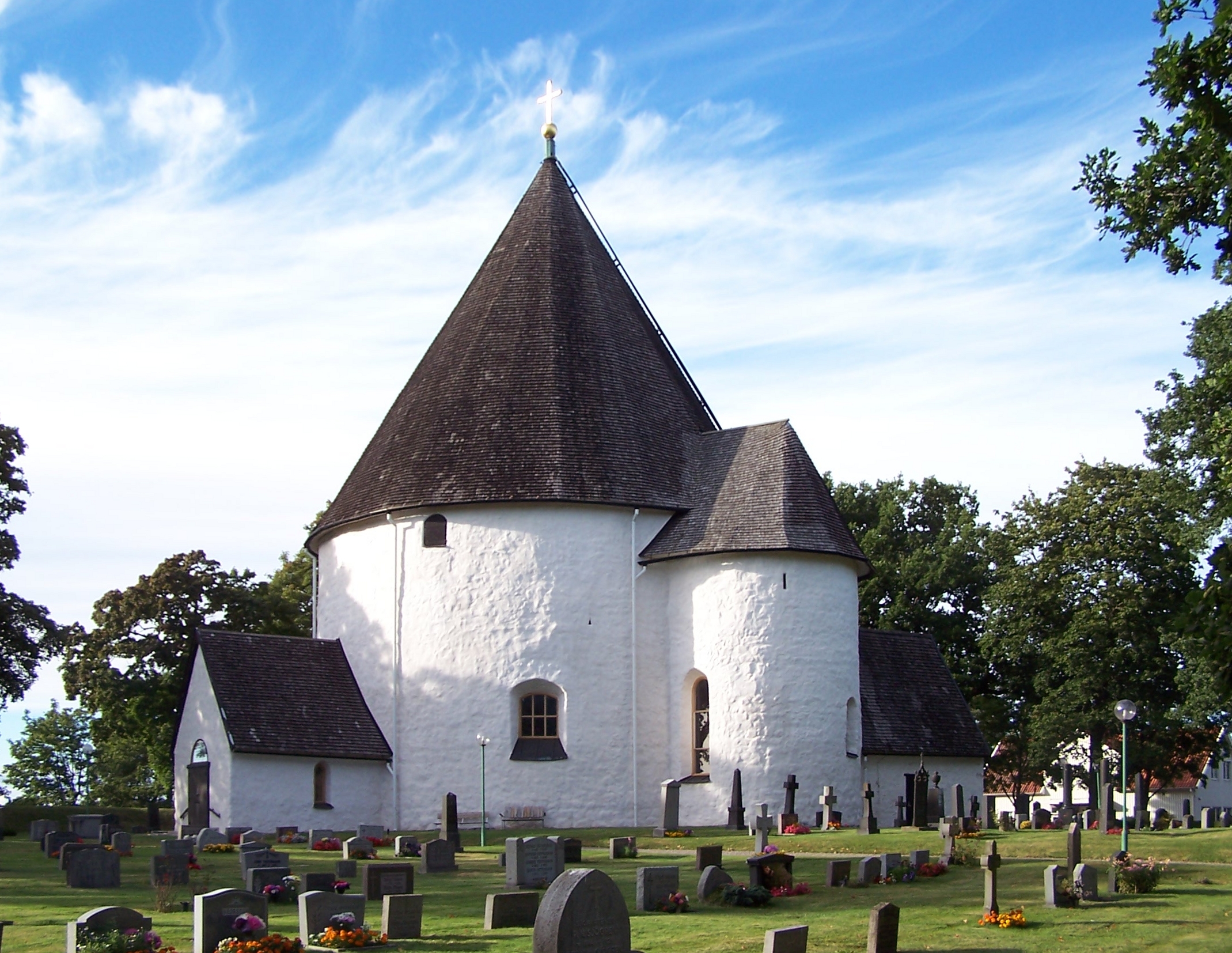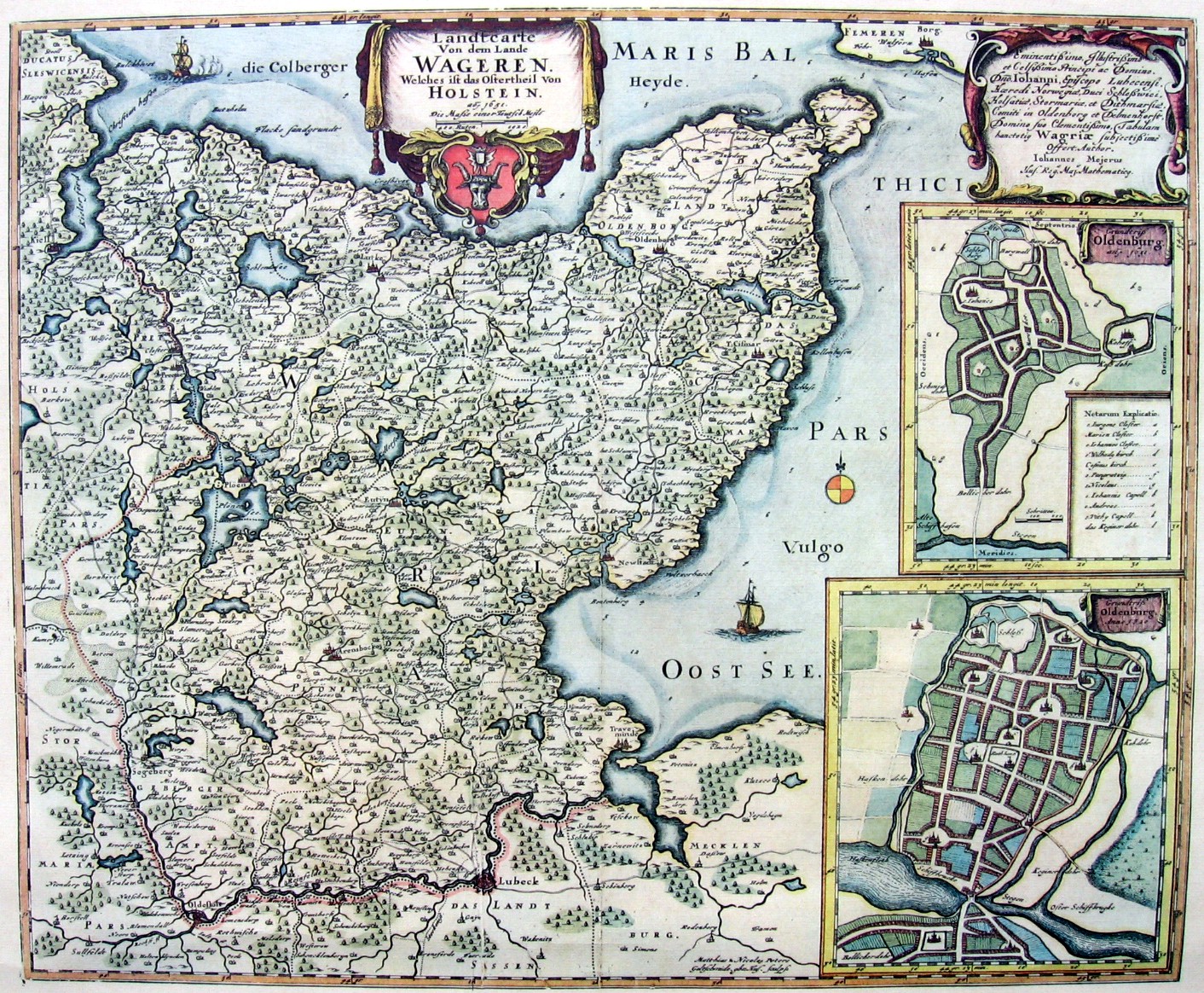|
Nordic Round Churches
Nordic round churches are a type of round church found in Denmark, Sweden, and Norway. Function and architectural precedents According to the usual interpretation, Nordic round churches were designed with defence in mind. Aside from their religious role, they also served as power symbols, storehouses and a safe place for community members to place their valuables during regional conflicts. Since stone buildings were still unusual in Scandinavia in the 12th century and there was not much experience of defending and attacking them, people in crisis areas often decided to build a single structure which combined the functions of a castle and a church, rather than two separate buildings. Even ordinary long churches were built such that the door could be barred from inside by very strong beams, which were inserted into deep holes on both sides of the door. Round churches also often had facilities which enabled the doors to be defended from above. In general, the round shape enabled d ... [...More Info...] [...Related Items...] OR: [Wikipedia] [Google] [Baidu] |
Hagby Kyrka
Hagby is a locality situated in Kalmar Municipality, Kalmar County, Sweden with 689 inhabitants in 2010. Hagby Church that lies in Hagby is one of only eight medieval round church A round church is a church construction with a completely circular plan. There are many Nordic round churches in Sweden and Denmark (notably the island of Bornholm); round churches were popular in Scandinavia in the 11th and early 12th centurie ...es in Sweden. References Populated places in Kalmar County Populated places in Kalmar Municipality {{Kalmar-geo-stub ... [...More Info...] [...Related Items...] OR: [Wikipedia] [Google] [Baidu] |
Orkney
Orkney (; sco, Orkney; on, Orkneyjar; nrn, Orknøjar), also known as the Orkney Islands, is an archipelago in the Northern Isles of Scotland, situated off the north coast of the island of Great Britain. Orkney is 10 miles (16 km) north of the coast of Caithness and has about 70 islands, of which 20 are inhabited. The largest island, the Mainland, Orkney, Mainland, has an area of , making it the List of islands of Scotland, sixth-largest Scottish island and the List of islands of the British Isles, tenth-largest island in the British Isles. Orkney’s largest settlement, and also its administrative centre, is Kirkwall. Orkney is one of the 32 Subdivisions of Scotland, council areas of Scotland, as well as a Orkney (Scottish Parliament constituency), constituency of the Scottish Parliament, a Lieutenancy areas of Scotland, lieutenancy area, and an counties of Scotland, historic county. The local council is Orkney Islands Council, one of only three councils in Scotland with ... [...More Info...] [...Related Items...] OR: [Wikipedia] [Google] [Baidu] |
Wagria
WagriaArnold, Benjamin (1991). ''Princes and territories in medieval Germany'', Cambridge University Press, Cambridge and New York, p. 156. . (german: Wagrien, ''Waierland'' or ''Wagerland'') is the northeastern part of Holstein in the German state of Schleswig-Holstein, corresponding roughly to the districts of Plön and Ostholstein. The word "Wagria" is derived derived from the Slavic Lechites tribe of Wagri, which meant "those who live by the bays". Geography In the Middle Ages, and as still shown on early modern maps, Wagria was bordered on the north and east by the Baltic Sea from the Kiel Fjord to Lübeck Bay, and inland by the rivers Schwentine and Trave. Today, Wagria generally refers just to the Oldenburg Peninsula (''Oldenburgische Halbinsel'') in Ostholstein. The highest elevation in the peninsula is the Bungsberg at 168 metres. History The Lechitic (Slavic) root of the name, ''Wagria'', meant not only the so-called, present-day Wagrian peninsula, but the entire ... [...More Info...] [...Related Items...] OR: [Wikipedia] [Google] [Baidu] |
Absalon
Absalon (21 March 1201) was a Danish statesman and prelate of the Catholic Church who served as the bishop of Roskilde from 1158 to 1192 and archbishop of Lund List of (arch)bishops of Lund. Until the Danish Reformation the centre of a great Latin (arch)bishopric, Lund has been in Sweden since the Treaty of Roskilde in 1658. The Diocese of Lund is now one of thirteen in the Church of Sweden. Cathol ... from 1178 until his death. He was the foremost politician and church father of Denmark in the second half of the 12th century, and was the closest advisor of King Valdemar I of Denmark. He was a key figure in the Danish policies of territorial expansion in the Baltic Sea, Europeanization in close relationship with the Holy See, and reform in the relation between the Church and the public. He combined the ideals of Gregorian Reform with loyal support of a strong monarchical power. Absalon was born into the powerful ''Hvide'' clan, and owned great land possessions. He endowe ... [...More Info...] [...Related Items...] OR: [Wikipedia] [Google] [Baidu] |
Zealand
Zealand ( da, Sjælland ) at 7,031 km2 is the largest and most populous island in Denmark proper (thus excluding Greenland and Disko Island, which are larger in size). Zealand had a population of 2,319,705 on 1 January 2020. It is the 13th-largest island in Europe by area and the 4th most populous. It is connected to Sprogø and Funen by the Great Belt Fixed Link and to Amager by several bridges in Copenhagen. Indirectly, through the island of Amager and the Øresund Bridge, it is also linked to Scania in Sweden. In the south, the Storstrøm Bridge and the Farø Bridges connect it to Falster, and beyond that island to Lolland, from where the Fehmarnbelt Tunnel to Germany is planned. Copenhagen, the capital of Denmark, with a population between 1.3 and 1.4 million people in 2020, is located mostly on the eastern shore of Zealand and partly on the island of Amager. Other cities on Zealand include Roskilde, Hillerød, Næstved, Helsingør, Slagelse, Køge, Holbæk a ... [...More Info...] [...Related Items...] OR: [Wikipedia] [Google] [Baidu] |
Funen
Funen ( da, Fyn, ), with an area of , is the third-largest island of Denmark, after Zealand and Vendsyssel-Thy. It is the 165th-largest island in the world. It is located in the central part of the country and has a population of 469,947 as of 2020. Funen's main city is Odense, which is connected to the sea by a seldom-used canal. The city's shipyard, Odense Steel Shipyard, has been relocated outside Odense proper. Funen belongs administratively to the Region of Southern Denmark. From 1970 to 2006 the island formed the biggest part of Funen County, which also included the islands of Langeland, Ærø, Tåsinge, and a number of smaller islands. Funen is linked to Zealand, Denmark's largest island, by the Great Belt Bridge, which carries both trains and cars. The bridge is in reality three bridges; low road and rail bridges connect Funen to the small island of Sprogø in the middle of the Great Belt, and a long road suspension bridge (the second longest in the world at the time ... [...More Info...] [...Related Items...] OR: [Wikipedia] [Google] [Baidu] |
Jutland
Jutland ( da, Jylland ; german: Jütland ; ang, Ēota land ), known anciently as the Cimbric or Cimbrian Peninsula ( la, Cimbricus Chersonesus; da, den Kimbriske Halvø, links=no or ; german: Kimbrische Halbinsel, links=no), is a peninsula of Northern Europe that forms the continental portion of Denmark and part of northern Germany. The names are derived from the Jutes and the Cimbri, respectively. As with the rest of Denmark, Jutland's terrain is flat, with a slightly elevated ridge down the central parts and relatively hilly terrains in the east. West Jutland is characterised by open lands, heaths, plains, and peat bogs, while East Jutland is more fertile with lakes and lush forests. Southwest Jutland is characterised by the Wadden Sea, a large unique international coastal region stretching through Denmark, Germany, and the Netherlands. Geography Jutland is a peninsula bounded by the North Sea to the west, the Skagerrak to the north, the Kattegat and Baltic Sea to the ... [...More Info...] [...Related Items...] OR: [Wikipedia] [Google] [Baidu] |
Østerlars Church
Østerlars Church (''Østerlars kirke'') is a historic building located just north of the village of Østerlars, south of Gudhjem on the island of Bornholm, Denmark. It is the largest and, possibly, the oldest of the island's four round churches.Østerlars kirke. From Nordens kirker. In Danish. Retrieved 3 December 2009.Østerlars kirke. From NaturBornholm In Danish. Retrieved 3 December 2009. History Built around 1160, it consists of an apse, an oval chancel, a large round nave and has three storeys. There is evidence the church was once fortified, the top storey serving ...[...More Info...] [...Related Items...] OR: [Wikipedia] [Google] [Baidu] |
Conical Roof
A conical roof or cone roof is a cone-shaped roof that is circular at its base and terminates in a point. Distribution Conical roofs are frequently found on top of towers in medieval town fortifications and castles, where they may either sit directly on the outer wall of the tower (sometimes projecting beyond it to form eaves) or form a superstructure above the fighting platform or terrace of the tower. The latter necessitated the use of spouts to lead the water away over the top of the walls (e.g. as at Andernach's ''Alter Krahnen''). In this case the cone roof was surrounded by a protective wall, a parapet or a battlement. Such conical roofs were usually constructed using a timber-framed support structure covered with slate; more rarely they were made of masonry. A small circular turret or tourelle with a conical roof is called a pepperpot or pepperbox turret. Today, conical roofs are more often used in rural areas either for circular or small square buildings. They are d ... [...More Info...] [...Related Items...] OR: [Wikipedia] [Google] [Baidu] |
Battlements
A battlement in defensive architecture, such as that of city walls or castles, comprises a parapet (i.e., a defensive low wall between chest-height and head-height), in which gaps or indentations, which are often rectangular, occur at intervals to allow for the launch of arrows or other projectiles from within the defences. These gaps are termed " crenels" (also known as ''carnels'', or ''embrasures''), and a wall or building with them is called crenellated; alternative (older) terms are castellated and embattled. The act of adding crenels to a previously unbroken parapet is termed crenellation. The function of battlements in war is to protect the defenders by giving them something to hide behind, from which they can pop out to launch their own missiles. A defensive building might be designed and built with battlements, or a manor house might be fortified by adding battlements, where no parapet previously existed, or cutting crenellations into its existing parapet wall. A d ... [...More Info...] [...Related Items...] OR: [Wikipedia] [Google] [Baidu] |
Fortified Church
A fortified church is a church that is built to serve a defensive role in times of war. Such churches were specially designed to incorporate military features, such as thick walls, battlements, and embrasures. Others, such as the Ávila Cathedral were incorporated into the town wall. Monastic communities, such as Solovki Monastery, are often surrounded by a wall, and some churches, such as St. Arbogast in Muttenz, Switzerland, have an outer wall as well. Churches with additional external defences such as curtain walls and wall towers are often referred to more specifically as fortress churches or ''Kirchenburgen'' (literally "church castles"). Most fortified churches may be found in parts of Europe for example in the Dordogne region of France, fought over by France and England in medieval times, and in Transylvania, during the Ottoman invasions. Fortified churches were also built in places controlled by colonial empires, such as one in the Philippines at the scene of the s ... [...More Info...] [...Related Items...] OR: [Wikipedia] [Google] [Baidu] |





